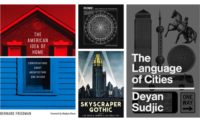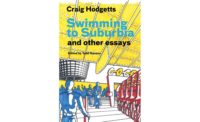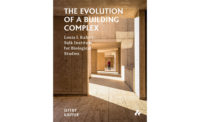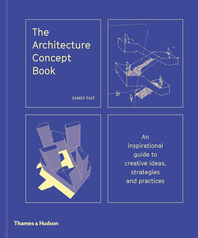Review of 'Archigram: The Book'
By Warren Chalk, Peter Cook, Dennis Crompton, Ron Herron, David Greene, and Michael Webb

Archigram: The Book, by Warren Chalk, Peter Cook, Dennis Crompton, Ron Herron, David Greene, and Michael Webb; edited by Dennis Crompton, with essays by Reyner Banham, Martin Pawley, Michael Sorkin, and others. Circa Press, 300 pages, $135.
Imagine that the animated yellow submarine of the 1968 Beatles film sprouts a dozen or so telescoping legs, grows to the size of a city, and walks over to join three or four more just like it. This mobile architecture—the product of frenzied drawing more than psychotropic drugs—is just one of the provocations from the prolific 1960s British collective Archigram included in this book.
Archigram arose from the idea of an urgent architectural telegram: what started as a sixpence pamphlet published in a northwest London basement in 1961 grew to become an architectural movement. Archigram directed 10 printed salvos at the profession through 1974. They were written and drawn by a group of moonlighting, fun-loving, pen-wielding Brits led by Warren Chalk, Peter Cook, Dennis Crompton, David Greene, Ron Herron, and Michael Webb. These pamphlets, reproduced close to original size, serve as the connective tissue binding assorted essays and projects that fill the 300 pages of this lively compendium.
While Archigram’s drawn output was substantial, its actual built work was limited to a handful of exhibition designs, including a pavilion for the 1970 Osaka World Expo, a swimming pool for Rod Stewart, a playground, and an underground multipurpose exhibition hall in Monaco.
If Le Corbusier’s self-promoting L’Esprit Nouveau journal set the table for Modernism, the Archigram pamphlets were a mischievous attempt at a tablecloth swiped from under the setting: samplings of the collective’s works, overlaid with thematic text, took deliberate aim at the stale modernism Archigram’s members encountered in their day jobs. Full of colorful pop images and exclamation points, each Archigram was meant as a caffeinated jolt to stimulate the profession out of stagnation and into renewed conversation. With speculative projects that incorporated technological innovations characteristic of the space race—such as the movable towers of Cape Kennedy, as well as space capsules themselves— with axonometric and collaged renderings, Archigram developed a high-tech architecture that resonated worldwide. Echoes or aftershocks appeared in renderings by Richard Rogers and Renzo Piano for Paris’s Centre Pompidou, Superstudio’s gridded infinities, Madelon Vriesendorp’s Delirious New York illustrations, and the postwar infill imaginations of Lebbeus Woods.
Fifty years after Archigram’s heyday, many of its proposals seem prescient, for the group investigated stackable, expandable housing and universities, with movable cranes adding or replacing parts as needed. Yet for all of the energy poured into these schemes, a midcentury ethos of such disposable dwellings stands out as incongruous with today’s concerns over sustainability and material use.
Each edition of Archigram’s efforts consisted of loosely arranged, thematically similar project images—usually rotated to further disorient the reader and linked by snippets of poetic text—on stapled sheets. The current book fleshes out schemes explored by the group with longer project narratives and the usual sidecar of plans, sections, and details. Fold-out sections and a pop-up add dimension and a touch of fun, as does the inclusion of photos from the Archigram Opera, a four-screen multimedia installation that debuted in 1972.
But by collecting all the far-flung remnants of Archigram pamphlets into a single publication, the urgency of the original message gets lost in the pages of a weighty book. Such a wealth of images and explanation requires slow perusal and runs counter to the wildfire spread of ideas stoked by the pamphlets in their day, or by widely shareable visuals that go viral in the current media landscape (a digital archive of Archigram’s output was launched in 2010 by EXP, the Research Centre for Experimental Practice at the University of Westminster). Yet in returning to print, the medium that launched the group, Archigram reasserts its legacy as one that is far from ephemeral.





